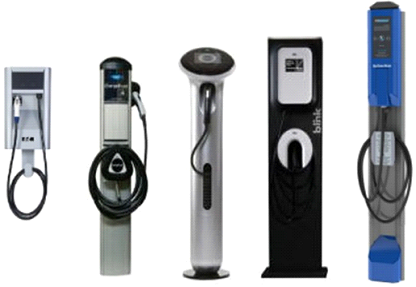31. May 2015 15:09 by Christian in
Mercedes-Benz developed new technologies to ensure the safety of driving:
- Helps the driver in guiding the vehicle in its lane and can follow the vehicle in front in slow-moving traffic automatically.
- Detects pedestrians and initiates autonomous braking to avoid a collision at speeds up to 50 km/h.
- Detects cross traffic and if required, boost the braking pressure applied by the driver accordingly.
- Adaptive High-beam Assist
- Active Blind Spot Assist
- Active Lane Keeping Assist
Cruise Control Steering Assistant to keep the car centered within the lane limits maintaining also the optimal distance to the vehicle ahead:
MB1.mp4 (24.85 mb)
Pre-Safe Brake with Pedestrian Recognition:
MB2.mp4 (22.69 mb)
Cross Traffic Assistant that enhances the braking system preventing collisions:
MB3.mp4 (20.55 mb)
Download and view MP4 files in VLC Media Player
31. May 2015 13:59 by Christian in
Norway is the champion of plug-in vehicle fleet per capita reaching in May 2015 over 50,000 pure EVs and about 4,000 plug-in hybrids using an infrastructure of 6,000 electric recharge stations. Norway government incentives succeeded to make the electric car purchase price competitive with ICE cars. Plug-in EVs are exempted from all non-recurring vehicle fees, 25% VAT on purchase, ferryboat fees, public parking fees, annual road tax, toll payments, and are allowed to use bus lanes.
In April 2015 YTD EV sales per country in Europe was 8646 in Norway, 5551 in France, and 3461 in Germany. The 2013 population was 5.084 million in Norway, 66.03 million in France, and 80.62 million in Germany.
In Mar 2015 plug-in EVs sold worldwide was 48,062 out of which 23,339 only in US.
In Apr 2015 plug-in EVs sold worldwide was 90,050 out of which 32,443 only in US. The US population in 2014 was 318.9 million.
US new public charging stations installed in the first quarter of 2015:
1. California: 436
2. Florida: 80
3. Georgia: 67
4. Washington: 52
5. Massachusetts: 50
6. North Carolina: 43
7. Texas: 40
8. Ohio: 37
9. Minnesota: 35
Excluding private stations in the United States the EV drivers have access to 9,639 electric stations and 24,784 charging outlets.
30. May 2015 22:41 by Christian in
The most noticeable difference is driving in a very quiet and comfortable environment. Listening to sophisticated music becomes possible.
The total 5-year cost, including depreciation, taxes and fees, financing, fuel, insurance, maintenance, repairs, and tax credit is lower for electric than plug-in hybrids, hybrids, or ICE (internal combustion engine) cars. The total 5-year cost is not significant anymore if the existent governmental tax brake in place for plug-in hybrids and EVs is removed. However, the EV buying price is significantly higher than for an ICE car.
The technology used to build the existent EV batteries is expected to significantly improve in the next 10 years. So far what is not encouraging the potential buyers is:
- driving distance range offered by the current battery storing capacity
- battery degradation (e.g. Nissan guarantees that the Leaf battery will retain at least 70% capacity after 5 years / 60 miles)
- high battery replacement cost offered by the current technology (e.g. Nissan Leaf $5,500 after trade-in allowance)
The plug-in charger stations poor infrastructure is probably the main reason in making a decision if the EV has enough driving range. The cost of KW/h may be attractive but there is also a cost of having a charger station in your garage, and most likely you cannot afford a fast-charge station.

While the plug-in charging infrastructure for EVs is being implemented the plug-less WPT (Wireless Power Transfer or Inductive Charging) is also present on the EV market.
The plug-less WPT charging systems are available in both stationary & dynamic configurations:

